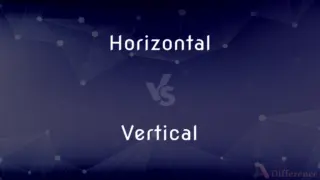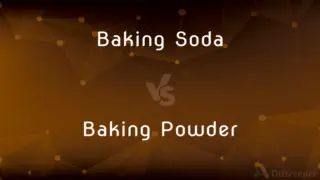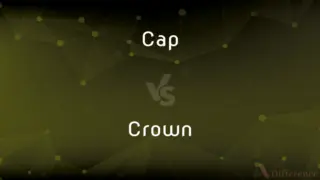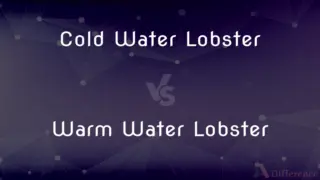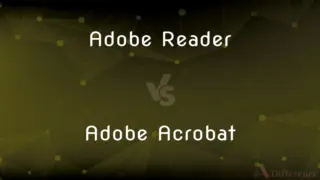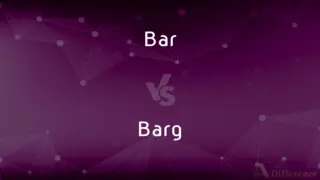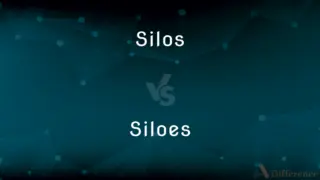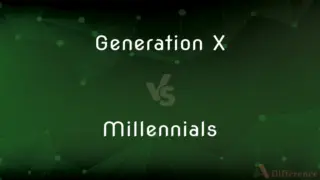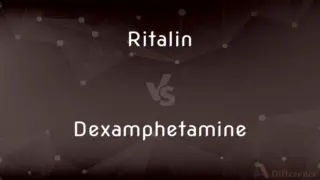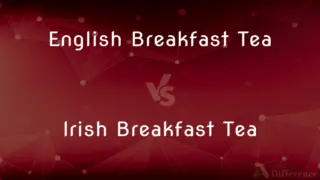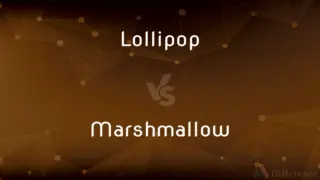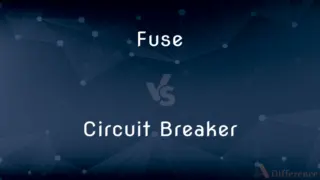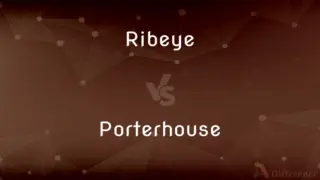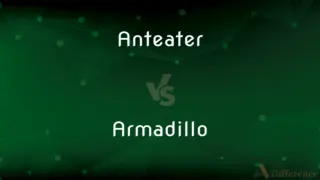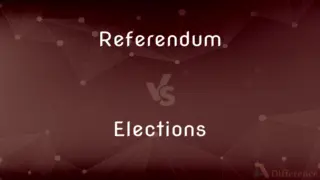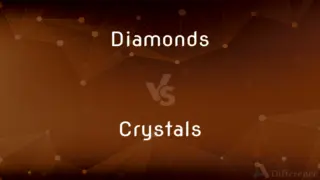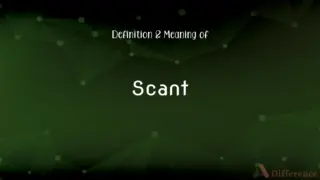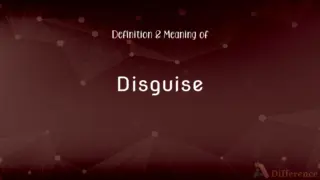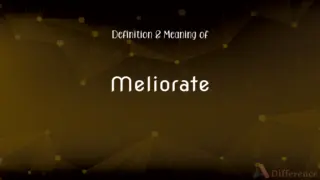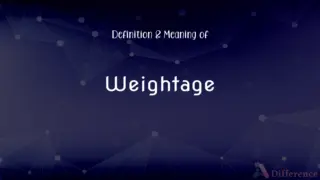Autoionization vs. Autoprotolysis — What's the Difference?
By Fiza Rafique & Urooj Arif — Updated on May 7, 2024
Autoionization is a process where identical molecules ionize each other without an external agent, while autoprotolysis specifically refers to the transfer of a proton between identical molecules, creating conjugate acid-base pairs.

Difference Between Autoionization and Autoprotolysis
Table of Contents
ADVERTISEMENT
Key Differences
Autoionization involves the spontaneous ionization of identical molecules, resulting in positive and negative ions. Autoprotolysis, on the other hand, specifically involves proton transfer between molecules, creating positive and negative ions in the form of conjugate acid-base pairs.
Autoionization occurs in pure substances like water or ammonia, leading to ions like hydroxide and hydronium in water. Autoprotolysis, however, is a subset involving acids and bases where a proton donor (acid) and proton acceptor (base) are formed.
Autoionization typically results in ions other than conjugate pairs. For instance, water autoionizes to hydronium and hydroxide ions, whereas autoprotolysis inherently produces these pairs, like ammonia forming NH4+ (ammonium) and NH2-.
Autoionization is a broader term that applies to any substance that can ionize itself, while autoprotolysis is specific to substances capable of proton transfer.
Comparison Chart
Definition
Spontaneous ionization of identical molecules
Proton transfer creating conjugate acid-base pairs
ADVERTISEMENT
Ion Formation
Positive and negative ions
Acid and base pairs
Example
Water to hydronium and hydroxide ions
Ammonia to NH4+ and NH2-
Process Type
Broad ionization
Specific proton transfer
Specificity
Applies to any self-ionizing substance
Involves acids and bases
Compare with Definitions
Autoionization
Ionization occurring in pure substances without an external ion.
Liquid ammonia shows autoionization to a lesser extent than water.
Autoprotolysis
Exchange of protons between identical molecules.
The autoprotolysis of water results in hydronium and hydroxide ions.
Autoionization
The spontaneous ionization of identical molecules.
Water undergoes autoionization to form hydronium and hydroxide ions.
Autoprotolysis
Related ions formed through proton exchange.
The autoprotolysis of alcohol can create conjugate pairs, although less efficiently.
Autoionization
Identical neutral molecules ionize into positive and negative ions.
Pure sulfuric acid exhibits autoionization when left undiluted.
Autoprotolysis
Formation of conjugate acid and base ions.
Ammonia's autoprotolysis forms NH4+ and NH2- ions.
Autoionization
Behaving like an electrolyte due to spontaneous ion formation.
The autoionization of pure water gives it weak electrical conductivity.
Autoprotolysis
Reaching equilibrium between acid and base pairs.
The autoprotolysis equilibrium depends on the concentration of pure liquid ammonia.
Autoionization
Creation of ions due to self-ionization.
The autoionization of water is vital in maintaining its pH balance.
Autoprotolysis
Protonation and deprotonation happening simultaneously.
Water molecules participate in self-protonation through autoprotolysis.
Autoionization
Autoionization is a process by which an atom or a molecule in an excited state spontaneously emits one of the outer-shell electrons, thus going from a state with charge Z to a state with charge Z + 1, for example from an electrically neutral state to a singly ionized state.Autoionizing states are usually short-lived, and thus can be described as Fano resonances rather than normal bound states. They can be observed as variations in the ionization cross sections of atoms and molecules, by photoionization, electron ionization and other methods.
Autoprotolysis
In autoprotolysis a proton is transferred between two identical molecules, one of which acts as a Brønsted acid, releasing a proton which is accepted by the other molecule acting as a Brønsted base. For example, water undergoes autoprotolysis in the self-ionization of water reaction.
Autoionization
A process by which atoms or molecules spontaneously transition from an electrically neutral state to a lower-energy ionized state
Autoprotolysis
(chemistry) The autoionization of water (or similar compounds) in which a proton (hydrogen ion) is transferred to form a cation and an anion e.g. 2H2O => H3O+ + OH-
Common Curiosities
What is the main difference between autoionization and autoprotolysis?
Autoionization is the general self-ionization of molecules, while autoprotolysis is specific to proton transfer.
Is autoprotolysis a type of autoionization?
Yes, autoprotolysis is a subset of autoionization involving proton transfer.
Does autoprotolysis always result in acid-base pairs?
Yes, autoprotolysis always creates conjugate acid-base pairs through proton transfer.
Can water undergo both autoionization and autoprotolysis?
Yes, water's autoionization involves proton transfer, which is also autoprotolysis.
What ions does water form through autoprotolysis?
Water forms hydronium (H3O+) and hydroxide (OH-) ions.
Is ammonia's autoprotolysis similar to water's?
Yes, ammonia undergoes autoprotolysis to form ammonium and amide ions.
Does autoprotolysis influence the pH of a solution?
Yes, the ion formation directly affects the pH.
What is a practical example of autoprotolysis in action?
The pH of pure water is determined through the autoprotolysis of water molecules.
Can all substances undergo autoprotolysis?
No, only substances capable of acting as both acids and bases can undergo autoprotolysis.
Does autoionization always create stable ions?
Not always; some ions formed may be reactive and unstable.
Can pure alcohol undergo autoprotolysis?
Yes, although less efficiently, alcohol can create ions through autoprotolysis.
Is autoionization common in everyday chemicals?
Yes, many common chemicals like water and ammonia exhibit autoionization.
Does autoionization require external catalysts?
No, autoionization happens spontaneously in pure substances.
Does autoionization affect electrical conductivity?
Yes, ions formed through autoionization contribute to a substance's conductivity.
Is autoprotolysis reversible?
Yes, autoprotolysis is a reversible equilibrium process.
Share Your Discovery

Previous Comparison
Woke vs. Awake
Next Comparison
Tube vs. CanisterAuthor Spotlight
Written by
Fiza RafiqueFiza Rafique is a skilled content writer at AskDifference.com, where she meticulously refines and enhances written pieces. Drawing from her vast editorial expertise, Fiza ensures clarity, accuracy, and precision in every article. Passionate about language, she continually seeks to elevate the quality of content for readers worldwide.
Co-written by
Urooj ArifUrooj is a skilled content writer at Ask Difference, known for her exceptional ability to simplify complex topics into engaging and informative content. With a passion for research and a flair for clear, concise writing, she consistently delivers articles that resonate with our diverse audience.

